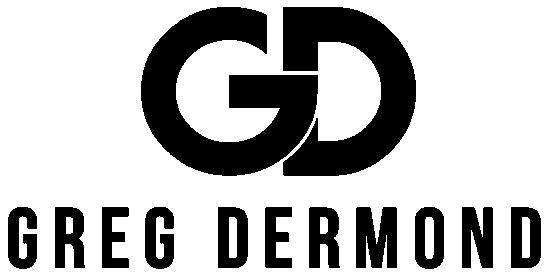20 Sales Statistics to Know
1. HubSpot Research found 72% of companies with less than 50 new opps per month didn't achieve their revenue goals, compared to 15% with 51 to 100 new opps and just 4% for companies with 101 to 200 new opps.
2. Gong's data science team analyzed 15 months of data and found average salespeople made far more calls in the last month of the quarter than the first two. And the success rate of those "eleventh hour" calls were usually lower than
any other month.
3. Only 24% of sales emails are opened.
4. An analysis of more than 2,200 American companies found those who attempted to reach leads within an hour of conveyed interest, were nearly seven times likelier to have meaningful conversations with decision makers than those who waited even 60 minutes.
5. The vast majority of prospects want to read emails at 5 and 6 a.m. (Who knew there were so many early
birds out there?)
6. The more you write, the less likely you are to get a response. Only one in three messages that are longer than 2500 words receive a reply. However, you shouldn't be too brief: A 25-word email is roughly as effective as a 2000-word one. What's the sweet spot? Between 50 and 125 words -- or around the length of this paragraph.
7. ***** According to Gong's analysis of 519,000 discovery calls, there's a clear relationship between the number of questions a rep asks and their chances of success. In other words, if you want your discovery call to go well, make sure you're periodically posing questions to the buyer. *****
8. Wondering what to ask? Questions about your prospect's business pain points and objectives are closely tied
to a won deal.
9. And when should you ask these questions? While average salespeople ask most of their questions at the beginning of a call -- usually because they're moving through a checklist -- great ones space their questions evenly throughout the meeting. This makes the conversation feel like a natural back-and-forth rather than an interview.
10. 65% of salespeople who use social selling fill their pipeline, compared to 47% of reps who do not.
11. Sales professionals with three to four years of selling experience spend 50% more time on training than those with two years or less and 110% as those with five years or more -- probably because rookies aren't sure if they're going to stay in sales and veterans don't believe they need to develop further.
12. Google found nearly half of all buyers are millennials.
13. And calling high might not be the best strategy anymore: While 64% of the C-suite has final sign-off, 81% of employees not in the C-suite influence purchasing decisions.
14. 92% of buyers trust referrals from people they know.
15. After a positive experience, 83% of customers would be happy to provide a referral. But salespeople aren't asking -- just 29% of customers end up giving a referral.
16. About 47% of top performers ask for referrals consistently, versus only 26% of non-top performers.
17. One in four salespeople majored in business. The second most popular major? The degree of life. 17% never attended college.
18. The typical AE spends 2.7 years on the job and takes 4.7
months to ramp.
19. Only 39% of salespeople intended to go into sales.
20. People are now spending about 40 percent of their time at work engaged in non-sales selling – persuading, influencing, and convincing others in ways that don’t involve anyone making a purchase. Across a range of professions, we are devoting roughly twenty-four minutes of every hour to moving others.
a. People consider this aspect of their work crucial to their professional success – even in excess of the considerable amount of time they devote to it.
Sources:
https://blog.hubspot.com/sales/sales-statistics
See “How Does Gallup Polling Work?” available at http://www.gallup.com/poll/101872/how-does-gallup-polling-work.aspx.

10 Personal Finance Statistics to Know
1. A Gallup poll found only about 1/3 of Americans (32%) maintain a household budget.
a. Only 30% of Americans have a long-term financial plan that includes savings and investment goals.
b. You’re most likely to budget if you make at least $75,000 per year.
2. A 2017 report in MarketWatch found that half of American households currently live paycheck to paycheck.
a. 19% have $0 saved to cover emergency expenses; 31% have less than $500 in emergency savings.
- Not surprisingly, about 49% of Americans are “concerned, anxious or fearful about their current financial well-being.”
- Interestingly enough, low income is not always to blame for financial hardship. Only 1 in 5 people (20%) facing financial hardship fall below the poverty line and make less than $40,000 per year.
3. According to the latest 2018 data from the Federal Reserve:
a. Americans hold over $1 trillion in credit card debt ($1,023,000,000,000).
1. Nonrevolving debt (loans) total over $2.8 trillion ($2,842,400,000,000).
4. According to a WalletHub auto financing report:
a. In 2016, the average new car auto loan financing cost was $28,667.30.
1. The average used car auto loan financed $17,241.59.
5. More than 40 million Americans have student loan debt, Time Money reports.
a. Almost six million (5.9 million) — or 14% — owe more than $50,000, says a study from Brookings Institution.
b. Brookings Institution reports $1.4 trillion in student debt. Student loans are second-largest household debt in the U.S. following housing.
c. At least 28% default on their loans.
6. According to a 2017 article in The Motley Fool:
a. The average loan amount on a new mortgage is $309,200.
7. As of February 2017, the Federal Reserve listed the average personal savings rate in the U.S. at 5.6%. This means the average American household saves just over half of what they should save. Experts recommend that your personal savings rate should be 10% of your income.
- American’s haven’t hit that recommend target
since May 1985. - The personal savings rate peaked in the U.S. in 1975 when the average personal savings rate hit a record 17.1%.
- Savings hit its lowest point in 2005 when we bottomed
out at just 1.9%.
8. A 2018 survey from Bankrate revealed that (Numbers match what Debt.com previously reported).
a. Only 39% of Americans could have enough savings to cover a $1,000 emergency.
b. 44% couldn’t cover a $400 out-of-pocket
emergency expense.
9. A GOBankingRates report finds 13.7% of Americans have $0 saved for retirement.
a. 28.6% have less than $10,000.
b. More are 27% more likely to have no retirement savings.
c. 8 out of 10 Millennials have started a retirement fund.
d. But Millennials are 6% less likely to have retirement savings than Gen Xers.
- 63% of Gen X has more than $10,000 saved and 40% have over $100,000.
10. A separate report by Smart Asset finds:
- 29% of households 55 and over have no retirement
savings or pension. - The median net worth for Americans age 35-44 is $14,226.
- The median for ages 55-64 is $45,447.
- The average Social Security benefit paid out $1,354.04
per month in 2016.
Source: https://www.debt.com/statistics/

